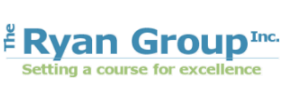Employee Engagement Assessment and Development Resources
Employee Engagement Assessment
The Employee Engagement Assessment is a self-assessment of 54 key questions across five categories gathering authentic perceptions of the respondent’s attachment, involvement, contribution, and treatment within the context of being an employee of the organization.
The Employee Engagement Categories
Organizational Attachment
Personal Involvement
Valued Contribution
Distributive Fairness
Quality and Customer Orientation
Questions and Answers That Change Everything
Do I feel pride in and ownership of my work?
Do I have a positive view of my role?
Do I receive recognition how my work contributes to organizational success?
Do I feel a sense of belonging?
Do I believe the organization provides opportunity for achievement and growth?
Do I feel performance management processes lead to fair outcomes?
and 48 additional key questions.
Quantitative and Qualitative Responses
The quantitative scales used in response to the questions are Does Not Describe, Somewhat Describes, and Clearly Describes. There is also opportunity to gather qualitative responses in the form of verbatim feedback providing an in-depth view of attitudes and opinions.
Instant Reporting
The report is a rank order report organized by green, yellow, and read bars of varying lengths. The system also provides a confidential group report of aggregated scores and a raw data report for understanding the data.
Facilitator's Guide and Respondent Guide
The Employee Engagement assessment includes the Facilitator's Guide with step-by-step instructions and information about conducting the assessment, interpreting the scoring and results, reviewing the findings with the participants, and a new Field Guide with specific activities addressing three important areas including Organization's Role, Manager's Role, and Employee's Role. A Respondent Guide is also included with screen shots and log in instructions for accessing and conducting the online assessment.
The Field Guide provides suggestions, research studies, activities, models, discussion questions, and worksheet templates to draw on when planning and implementing your employee engagement initiative rollout.
What is Employee Engagement?
Employee engagement is commonly described as the individual’s psychological attachment to the organization. Harter and Keyes define employee engagement, “as an individual’s involvement with, commitment to, and satisfaction with work.” (Hayes, Schmidt, Harter, 2002)
However, “researchers exploring the employee engagement construct in depth, find that it consists of cognitive, emotional, and behavioral components. While ‘satisfied’ employees have a positive work attitudes, ‘engaged’ employees have intellectual and emotional commitments to their work. Thereby creating deeper attachment to their jobs and organizations and leading to heightened performance.” (Dye, 2011)
Engagement is a Two-Way Commitment
Employee engagement is a two-way commitment: Employers must strive to engage employees and employees in turn must decide to what degree they want to be attached to their work and engaged with their associates and the organization.
The Engaged Employee Return on Investment
Employee engagement is receiving significant attention in today’s organizations because of the correlation between engaged employees and business outcomes. Here are some of the reasons why an employee engagement initiative is worth investing in.
Improved productivity and profitability
Research shows that engaged employees are more productive employees. They are more profitable, more customer-focused, safer, and more likely to withstand temptations to leave the organization. (Hayes, Schmidt, Harter, 2002)
Watson Wyatt found that high commitment organizations with loyal and dedicated employees out-performed those with low commitment by 47% in the 2000 study and by 200% in the 2002 study. (Wikipedia)
Lower absenteeism and turnover costs
Several well-regarded studies have recently estimated the cost of losing an employee:
SHRM, the Society for Human Resource Management, estimated that it costs $3,500.00 to replace one $8.00 per hour employee when all costs—recruiting, interviewing, hiring, training, reduced productivity, et cetera, were considered. SHRM’s estimate was the lowest of 17 nationally respected companies who calculate this cost! (Blake, 2006)
Other sources provide these estimates: It costs you 30-50% of the annual salary of entry-level employees, 150% of middle level employees, and up to 400% for specialized, high level employees! (Ajihon, 2013)
Branded Portal
The branded online portal system provides
- A URL link for secure login.
- An individual respondent site, accessible by username and password, for conducting assessments and printing individual reports.
- An administrative site, accessible by master ID number, for administering, monitoring, and printing team/group reports.
Contact
Darlene Davis
darlene.davis@ryangroupinc.com
